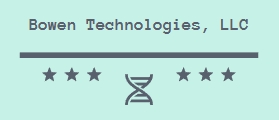Understanding Industrial Milling Machine Prices
Industrial milling machines have become an integral part of the manufacturing process across various industries. As businesses look to maintain efficiency and productivity, the choice of an appropriate milling machine is vital. However, one of the most pressing concerns for manufacturers and operators alike is the cost of these machines. Understanding the factors that influence the price of industrial milling machines can help potential buyers make informed decisions.
Factors Influencing Price
The price of industrial milling machines can vary greatly based on numerous factors. Key elements include machine size, type, complexity, and brand reputation. Heres a deeper look at these aspects:
| Factor | Description | Impact on Price |
|---|---|---|
| Machine Size | The physical dimensions and capacity of the milling machine, affecting processing capabilities. | Large machines are typically more expensive due to higher materials and construction costs. |
| Type of Milling Machine | Different types include vertical, horizontal, and multi-axis milling machines. | Specialized machines with advanced
features usually come with a higher price tag. |
| Brand Reputation | Established brands often charge more due to their reliability and customer service. | Premium brands can increase prices by 20-50% due to perceived value. |
| Technology and Features | Advanced features such as CNC controls, automation, and precision sensors increase capabilities. | Higher technology leads to a significant price increase, often exceeding 30%. |
These factors combined dictate the overall investment required for businesses looking to purchase an industrial milling machine. In addition, it’s essential to consider long-term operational costs, which directly influence the net worth of the initial price.
User Needs and Application Scenarios
When considering industrial milling machine prices, it’s crucial to evaluate user needs. Different sectors such as automotive, aerospace, and manufacturing often demand varying specifications, which can heavily influence the type of milling machine purchased.
For example, an automotive manufacturer might require high-speed vertical milling machines for precision parts production. Such machines typically start at around $20,000 and can exceed $250,000 depending on their capabilities. Their need for speed and accuracy drives the price up significantly.
In contrast, someone in the small-scale furniture industry might opt for a less complex and less expensive conventional milling machine ranging from $5,000 to $15,000. Here, the focus lies on versatility and lower costs rather than the high precision and speed required in automotive applications.
Additionally, industries dealing with large-scale operations may choose to invest in advanced multi-axis milling machines, which allow for highly complex operations and can start at $50,000. These machines are ideal for components that require intricate designs and shapes. Notably, the application demand directly impacts the pricing strategy.
Life Cycle Costing and Return on Investment
Understanding industrial milling machine prices is not just about the upfront cost. It also involves grasping the concept of life cycle costing (LCC). LCC takes into account all costs associated with a machine throughout its operational life, including maintenance, energy consumption, and potential downtimes.
For instance, while a cheap milling machine may save money upfront, it could incur higher maintenance costs or consume more energy, leading to a greater overall expense. Conversely, investing in a higher-quality, more expensive machine with lower operational costs can result in better ROI over time.
| Cost Component | Details |
|---|---|
| Initial Purchase Price | The cost of acquiring the machine. |
| Maintenance Costs | Regular servicing, repairs, and parts replacement. |
| Energy Consumption | Electrical costs of operating the machine. |
| Downtime Costs | Operational stoppage due to machine failure. |
Estimating these costs can provide a clearer picture of whether a higher-priced milling machine will suit your production needs better than a lower-priced alternative in the long run. Factors like warranty periods and the availability of spare parts must also be factored into the purchase decision.
Conclusion: Making Informed Decisions
When it comes to industrial milling machine prices, various considerations impact the total cost and value of a potential investment. By analyzing the specific needs and applications, businesses can more accurately assess the necessary features and capabilities of milling machines.
Furthermore, understanding both the initial purchase cost and the components of life cycle costing can provide crucial insights into ROI, leading to better purchasing decisions. Therefore, buyers should evaluate their current operational needs, do comparative research on different models, and consult with industry experts to ensure they choose the right milling machine for their requirements.
Ultimately, the right decision will not only serve immediate production needs but also contribute to the long-term success of the business.
“`
